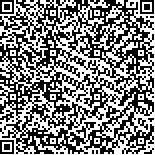| 引用本文: | 黄东佳1,2, 陈华1,3*, 韦霄4, 沈浩1, 叶万辉1.田野菟丝子寄生薇甘菊的形态解剖学研究[J].广西植物,2011,(4):451-455.[点击复制] |
| HUANG Dong Jia1,2,CHEN Hua1,3*, WEI Xiao4, SHEN Hao1, YE Wan Hui1.Characteristics of haustorium of holoparasite Cuscuta campestris[J].Guihaia,2011,(4):451-455.[点击复制] |
|
| |
|
|
| 本文已被:浏览 4376次 下载 1523次 |

码上扫一扫! |
|
|
| 田野菟丝子寄生薇甘菊的形态解剖学研究 |
|
黄东佳1,2, 陈华1,3*, 韦霄4, 沈浩1, 叶万辉1
|
|
1.中国科学院 华南植物园, 广州 510650;2.华南农业大学, 广州 510642;3.耀华中学, 天津 300040;4.广西壮族自治区中国科学院 广西植物研究所, 广西 桂林 541006
|
|
| 摘要: |
| 采用扫描电镜及光镜观察田野菟丝子——薇甘菊茎的全寄生系统建立的过程。根据对吸器发生发育的观察,将其发育过程划分为4个阶段:接触反应、吸附作用、侵入生长及维管系统的建立。田野菟丝子的寄生吸器由吸器原基发育而来;当田野菟丝子成功吸附到可寄生寄主时,两者间的接触面会积累一些分泌物;吸器原基继续发育为内生原基,侵入寄主植物后单向生长并进一步分化出韧皮部和木质部“搜索菌丝体”,木质部菌丝有明显的环纹次生壁加厚;两种“菌丝体”分别与寄主的韧皮部筛管和木质部导管相连通,有的甚至到达寄主植物的髓部,从而完成寄生过程。另外,如果吸器原基形成时未能成功接触到可寄生寄主,则会保持在内生原基阶段,停止发育,这个结构称之为假吸器。 |
| 关键词: 全寄生植物 吸器原基 侵入生长 菌丝体 假吸器 |
| DOI: |
| 分类号:Q944.3;Q945.79 |
| 基金项目: |
|
| Characteristics of haustorium of holoparasite Cuscuta campestris |
|
HUANG DongJia1,2,CHEN Hua1,3*, WEI Xiao4, SHEN Hao1, YE WanHui1
|
|
1.South China Botanical Gauden, Chinese Academy Sciences, Guangzhou 510650, China;2.South China Agricultural University, Guangzhou 510642, China;3.Yaohua High School, Tianjin 300040;4. Guangxi Institute of Botany, Guangxi Zhuang Autonomous Region and the Chinese Academy of Sciences, Guilin 541006, China
1.South China Botanical Gauden, Chinese Academy Sciences, Guangzhou 510650, China; 2.South China Agricultural University, Guangzhou 510642, China; 3.Yaohua High School, Tianjin 300040; 4. Guangxi Institute of Botany, Guangxi Zhuang Autonomous Region and the Chinese Academy of Sciences, Guilin 541006, China
|
| Abstract: |
| The development of the haustoria of the holoparasitic angiosperm Cuscuta campestris parasitizing the stem of Mikania micrantha was studied under scanning electron microscope and light microscope. According to the structural characters of paraffin slices,the haustorial development of C.campestris was divided into four main steps:contact,attachment,invasion and establishment of vascular tissues. The results indicated that the haustorium originated from a haustorial primordium; as the parasite attaching to the host,some secretion was produced to improve the attachment and invasion of the parasite; the haustorial primordium developed further into the endophyte primordium,and then invaded into the host tissue. After penetration,the haustorium grew straight into the host tissue and differentiated into some finger like protuberances at the tip,which were called search hyphae. Afterwards,the search hyphae were differed into xylem and phloem hyphae,which were respectively connected to the xylem vessel and phloem sieve tube of the host. And some xylem hyphae extended into the pith of the host stem. The secondary walls of the xylem hyphae were thickened annularly. Additionally,after the formation of the haustorial primordium,if not attaching to the available host,the primordium did not develop further. This structure was named as pseudo haustorium. |
| Key words: holoparasite haustorial primordium invasion hyphae pseudo haustorium |
|